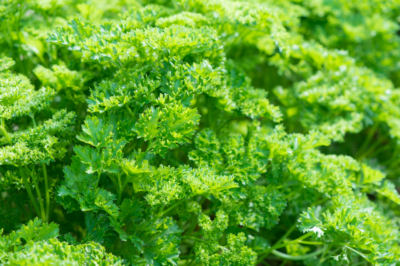Parsley is a biennial crop. In very good site conditions, it can even be perennial, but then it is no longer usable as a spice plant. It forms only a few leaves from flowering in the second year, which contain an excessive amount of toxic apiol.

Parsley is biennial
- In the first year possible to harvest all year
- In the second year, harvest only until flowering in June/July
- Do not use after flowering
- New sowing in spring or August
Parsley grows for two years in one place
Parsley is grown in the garden or on the balcony as a biennial plant.
In good site conditions, it also comes back in subsequent years. However, the leaves should then no longer be used for seasoning.
Plants are pulled out after flowering in the second year, as the yield in subsequent years is hardly worth mentioning.
Parsley plants in the first year
In the first year after sowing parsley develops a lot of leaves around the heart.
The leaves at this time are particularly aromatic.
They are cut close to the ground. The heart should not be injured, because then new leaves will not grow.
The flowering in the second year
Inflorescences begin to form no later than May. The flowering period of parsley lasts from June to July.
Once the plant blooms, the leaves are no longer edible. They accumulate toxic apiol, an essential oil that can cause spasms of digestive organs and uterus.
If you want to harvest seeds, leave the plants until the seeds are ripe. You can store dried seeds for up to three years. Caution: the seed is poisonous!
New sowing in August or spring
You can sow parsley on the windowsill from February to August or directly in the open in April or August.
August sowing is preferable in the open, as the plants are then less affected by diseases and pests.
Tips & Tricks
If you want to grow parsley consistently in the garden, you should create new beds every year. You will then always have a sufficient supply of particularly aromatic herb and can simply compost the plants after flowering.

